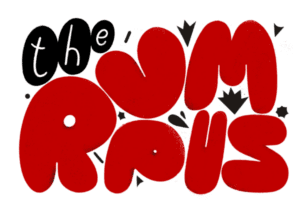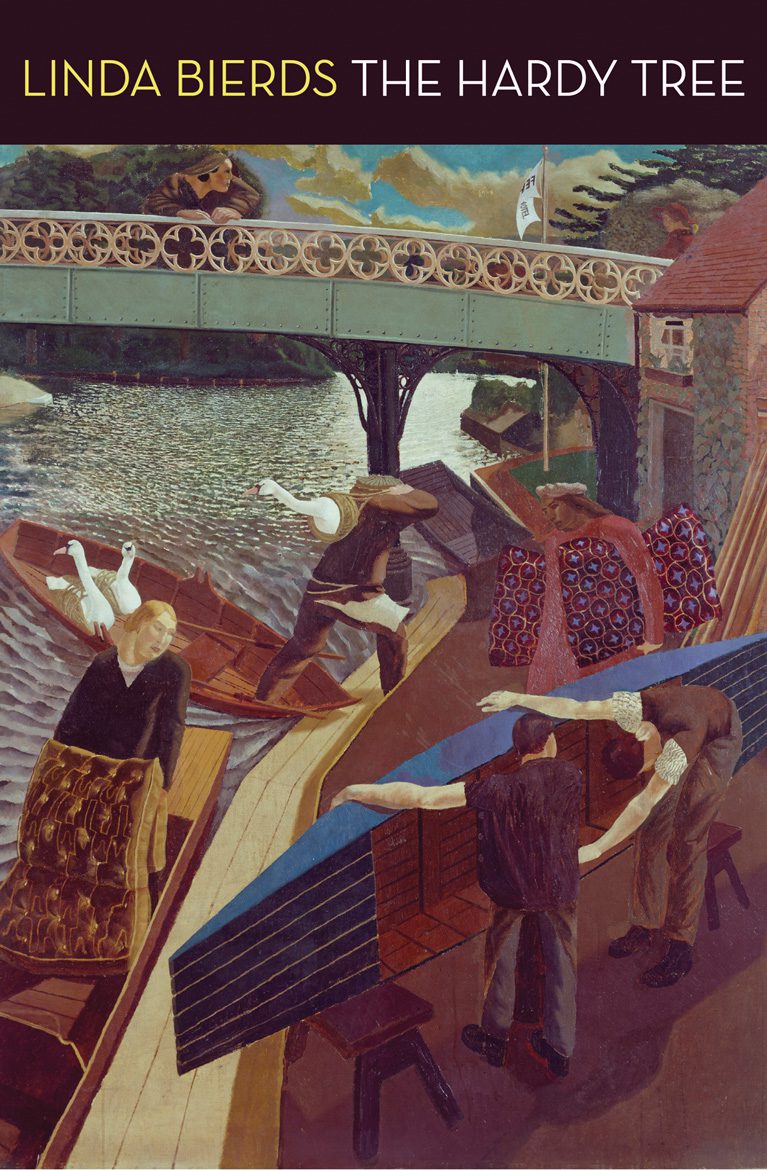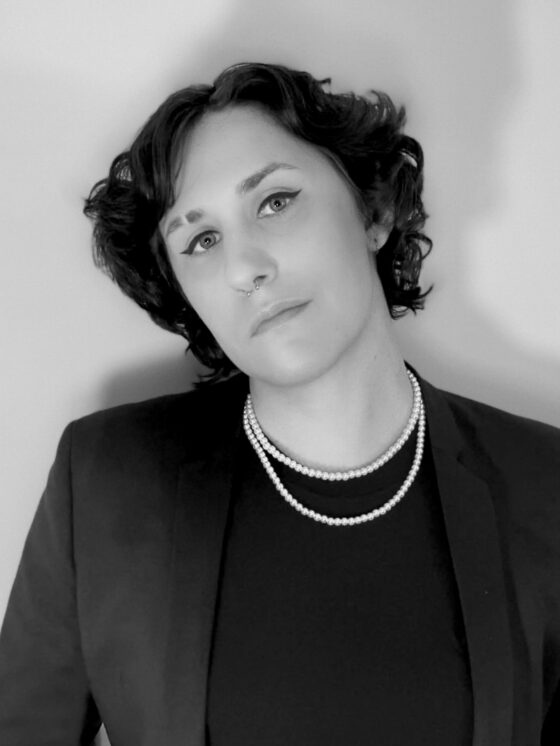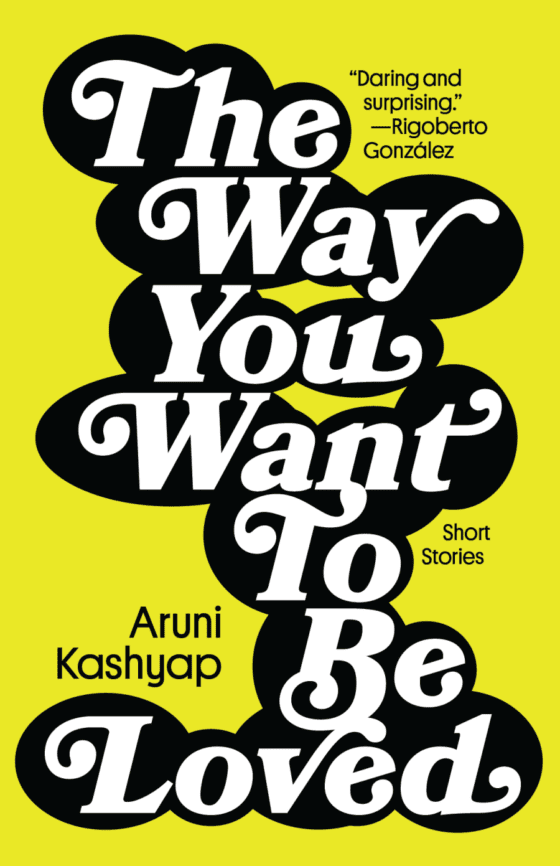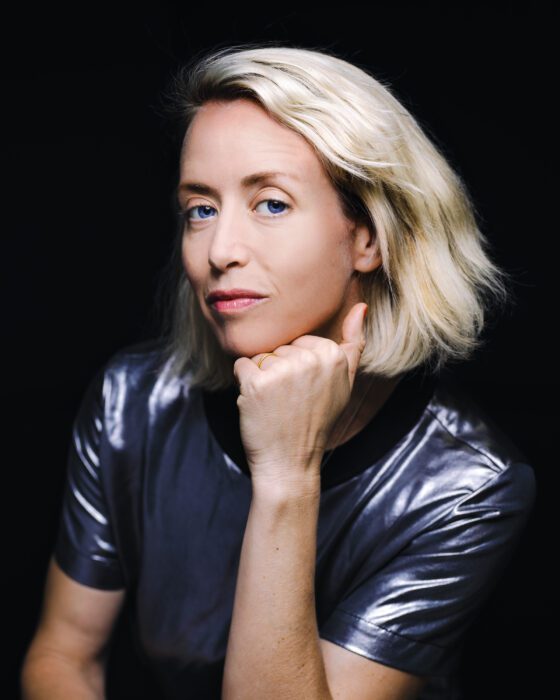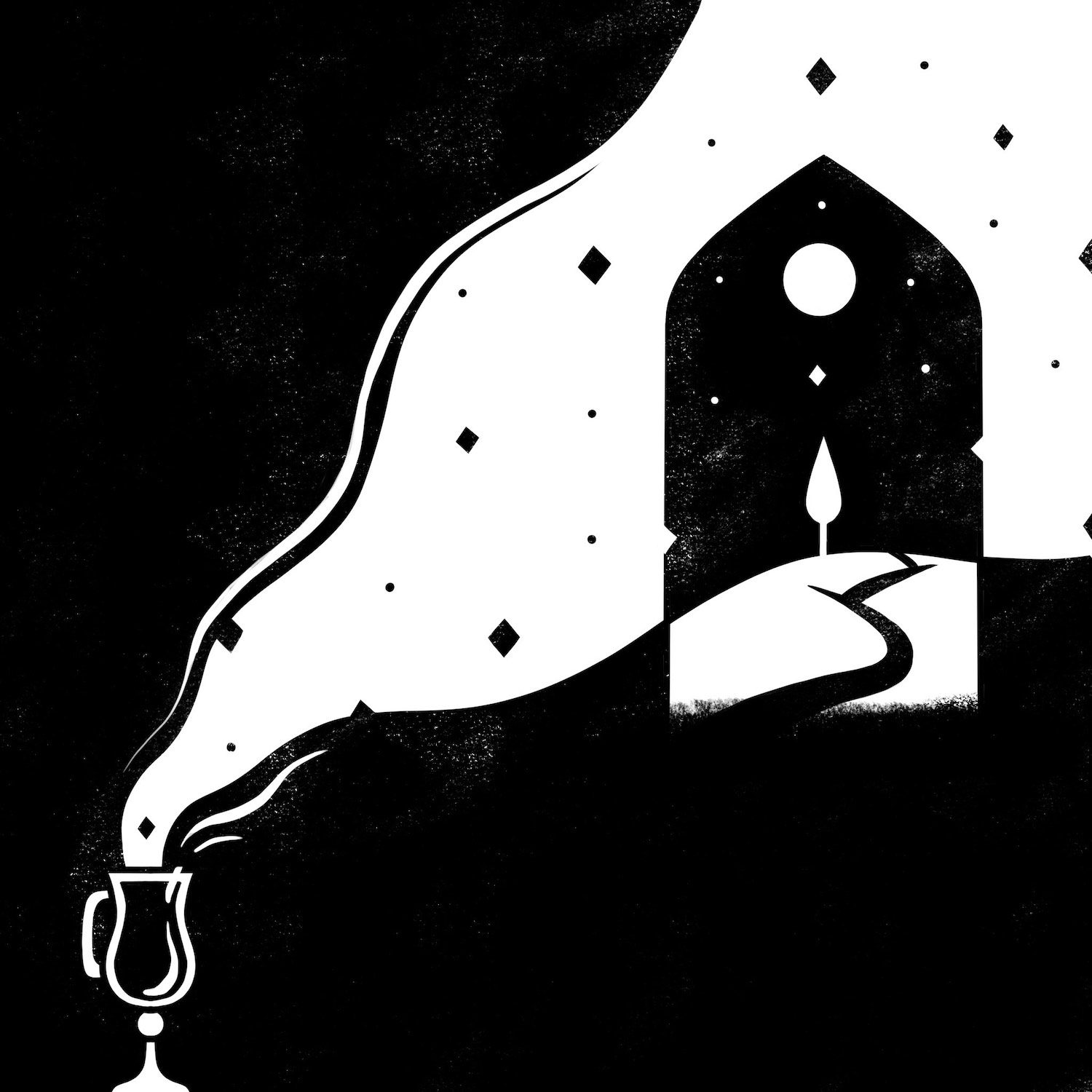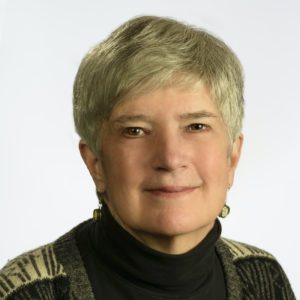
As a poet, Linda Bierds is a rare find. She’s a devoted researcher, a caring teacher, and a transcendent image-maker. Her work draws on ekphrasis, historical personae, scientific thinking, and artifacts to create whole worlds of made thought. In her newest book, The Hardy Tree, Bierds uses fragments of borrowed text and a variety of received forms—centos, erasure, identity matrix (a form invented by Bierds’s student Gabrielle Bates), and more—to render the many violences of war, language, and power.
I first encountered Linda Bierds through her book The Ghost Trio (1994) and, after years of reading her lush and lyrical poems, I studied with her as an MFA student at the University of Washington. With her gentle assistance and rigorous critiques, Bierds taught me that a great teacher is one who helps her students see how to clear out the clutter that keeps them from creating. It’s a lesson that I remember every time one of my students comes to me with a problem that seems, to them, insurmountable.
Bierds’s poems have been published in the New Yorker, Poetry, The Atlantic, Smithsonian, and other magazines. She has received Guggenheim Fellowship, a McArthur Genius Grant, and two NEA fellowship. Bierds is the author of ten books of poetry, including Roget’s Illusion (Putnam 2014), which was longlisted for the National Book Award.
I spoke with Linda Bierds just prior to the publication of The Hardy Tree (Copper Canyon, September 2019). The book draws its name from a real ash tree that exists in London. Around that tree, hundreds of gravestones stand, encircling it, having been moved from the graveyard in which they originally marked the dead. When railways usurped the space that the stones occupied, the young not-yet-novelist and poet Thomas Hardy was tasked with arranging the memorial. Over its hundred and fifty years, the Hardy Tree has sprouted roots, its wood rocking and rollicking over the ground, swallowing the stones into itself.
But I can’t stop imagining the name “Hardy” as the word “hardy”—meaning robust, from a Germanic root that means “to make hard.” Harden, like war does to its minions; harder, like the fight against climate change has become; hard, like turning human feeling into language.
Linda Bierds’s books have always inspired such multivalent thinking. In The Hardy Tree, she splices together lives of historical characters, landscapes of two world wars, and lines of past poets into her own monument. And in that monument’s presence, I feel my spine grow stronger, like a plant in its right place: hardy, here for the long haul, in full knowledge of all that can upend us.
Bierds and I spoke at Seattle’s Green Lake Park on a sunny Sunday in August.
***
The Rumpus: I’m curious how you first started writing in conversation with Turing.
Linda Bierds: We were in London. My partner saw that there was an exhibit in the Science Museum and said “I think you might be interested in this man.” I wasn’t working with codes, and I didn’t know him from Adam but the newspaper said that he was homosexual and persecuted and killed himself. So I just started from facts of great emotional value, and then worked backward into the life and into what he was most interested in, coding and computers early on, and later in life at the cellular level and patterns in the natural world.
I’ve been very lucky to have been able to live in London every summer for the last decade. So many of the people who appear in my book are there because of coincidences that occurred because of my living there: Turing, Nabokov, the World War I poets. Woolf and Hardy have been with me forever.
Rumpus: Do you think of Turing’s decoding as a kind of wholeness or a kind of fragmentation?
Bierds: I think that Turing’s decoding initially created a wholeness out of a perceived fragmentation. Created a wholeness out of chaos, the chaos of what initially was coming to him as something absolutely indecipherable. But once he’d translated that chaos into language—which, metaphysically, is a kind of fragmentation—what he had was a fragmented narrative of time and place and peril.
Rumpus: Turing’s great achievement was his wartime code breaking, and the idea of war occurs and recurs in so many different valances, across many wars. It’s hard to focus on war as an idea, or as an event in language, even.
Bierds: One of the summers that I was in London was the anniversary of the Battle of the Somme, and I would watch documentaries about the poets who were there and that coverage made WWI so emotionally immediate for me. I was interested in Alan Turing because of his life and the metaphoric implications of his work with coding, but I wasn’t interested in WWII.
Rumpus: The emotional center does feel closely tied to World War I, but I wondered if that was because I was associating those images with the World War I poets who are so important to me and, I know, to you.
Bierds: I think both things are true. The poems took the images from World War I, and World War I gave me the emotional center for poems unrelated to the war.
Rumpus: In a broader sense, how do you see geometry working in this book?
Bierds: Well, first I found geometry in the initial formation of gravestones around the Hardy Tree in the churchyard in London, how the stones were placed in concentric circles around the base of the tree. The gravestones were straight in Hardy’s time and as the tree has grown, the roots have disrupted them, they’ve lost their geometric integrity. This new, chaotic shape was very important to me as I wrote the book, how the script on one gravestone rubs up against the script on another. The fusion of all of the voices in the poems is represented to me by that image.
And script itself held interest for me, the shaping of letters: Virginia Woolf practicing her penmanship—push, pull—Nabokov with his alphabet blocks, Alan Turing as a young boy writing to his parents with a “pen of my own invention.” Communication’s dips and peaks and arcs.
Finally, each poem’s context and principal figure might invite a kind of geometric imagery. Often, though, I think those images might have come to me subconsciously. Over the years it took me to write this book, I’m sure that I unknowingly created an image bank and drew from it often enough to make recurrences seem intentional.
Rumpus: Tell me about the centos. There are many of them in this book, and to me they seem like some of the most intimate poems in this book.
Bierds: It means so much to have you say that. I felt that way, too. I had never used that form and only became familiar with it when one of you brought it to workshop. I owe a lot to the students in our workshop: Abi Pollokoff for introducing me to the cento, Catherine Bresner for her erasure poems, and Gabrielle Bates for allowing me to use the identity matrix form, which she invented.
I wrote the cento “Self-Portrait” and placed it as a kind of preface to alert the reader to what I was going to do, how I intended to borrow another’s lines throughout the book. And why I wanted to do that—how those gravestones leaning together, sharing their texts, had affected me.
The lines—god knows, Rachel—I would just go into my library. I have a big notebook, maybe three hundred favorite poems. And I would just start looking through, picking the lines that created the place I wanted the poem to go. The downside for that is the cento, for me, is very seductive. I thought, “I don’t think I’m ever going to write anything of my own again!” so I had to just stop.
Rumpus: It was clear that you loved them. In a lot of the poems there’s some sort of dialogue going on, like a direct address or a letter, or even the one poem with the italicized lines interspersed, but the centos feel so intimate. They feel like a personal “I” that we don’t often get in your work.
Bierds: Certainly the preface poem and “Cento for Sydney” revealed an autobiographical “I” that one rarely finds in my poems.
As the book progressed, I found the cento to be one way to unite the book’s major figures. The cento that has Nabokov, Hardy, and Turing is an example. Finding lines from Turing was a killer, by the way. I had to scan his scientific papers for phrases that would be tonally right. Anyway, I wanted all three men to be together in a poem I considered important.
Rumpus: And that poem is “Lepidopteran,” that’s one about mimicry and pattern.
Bierds: Yes, and about how patterns break. And that looks back at your question about the straight line and the geometric form. And I’m looking at perhaps the ghost of that, but how does it break? How do the cells break to make a horse? How do humans break under forces of oppression?
Rumpus: And, how does the environment break? To change the adaptability, to change the state of nature that is advantageous or even allowable, survivable. Were you thinking about environmental destruction when you were writing this?
Bierds: I was thinking about environmental destruction as part of a system that destroys the individual and then that ripples out into the world. And Turing—at the end of his life, he wasn’t addressing destruction, he was addressing human life and the natural world. Cellular division or the numeric patterns in pinecones.
Rumpus: I found it so interesting that, at the end of his life—I didn’t know this until I read your book—he was focused on those golden ratios, those Fibonacci sequences.
Bierds: Yes; in England, we went out to Kew Gardens where the beehive is, a sculpture that looks like a domed spiderweb, but it’s all metal, and I guess there are receptors—I’m not sure—that are hooked into beehives that are in the meadow, and so you can hear the bees doing their dances and you have to pick up the vibrations by holding this little stick in your mouth and leaning up against—oh, it was perfect for me! I thought, this is fabulous. But what’s so wonderful is that they gave all of this money so that this fellow could come in and do it. They said, yes this sounds like a good project. It’s art. It’s science. It’s mysterious.
Rumpus: Clearly these real world encounters with the spaces where your characters lived is important in your work. Do you find you do most of your generating when you’re in those spaces?
Bierds: No, I do most of my note-taking. And then when I get home I will have the material I need to launch the poem.
Rumpus: The painting on the cover, the source for the poem “Marking the Swans: Stanley Spencer at War,” seems to be quite a launching point. There are so many things I love about it: the modernism, the geometric quality of it fits very nicely with the subject of the book, and also the swans facing all different directions.
Bierds: And the fact that they’re bound. They’re bound the same way that the world, that the people at war are bound and made and marked and taking those swans up through the centuries, they would take their feet and crack them with a hammer. Okay, that one belongs to the queen! It can’t walk. Or marking them, cutting into their beaks. It just spoke to me about power and oppression.
Rumpus: Power, like in your Magna Carta poem. I think you told me in one meeting that you were making an erasure, but it wasn’t until later that you told me it was a self-erasure.
Bierds: [Laughs] Right!
Rumpus: And I was befuddled. I thought, that’s so hard to write something with the intent of erasing it. How do you make something and then erase it?
Bierds: My process in writing the host text with an eye on the erased text was similar to my process in writing the centos. Early on, I knew where I wanted the centos to go, so I found the lines that would take them there. The poem that the cento would become announced itself very early on. The poem embedded in the pre-erasure announced itself before I wrote the host text. So I wrote it knowing I would erase it. And I needed the five eternal questions to come at the end. So it wasn’t the same process. I didn’t discover a poem in a text. I made it happen and I had to keep going back and forth, back and forth.
Rumpus: It is interesting to hear you talk about the “characters” in your poems, because while there are many poets who write in others’ voices, they resist that term.
Bierds: Yes, I tend to refer to the people in my poems as characters. If I’m remembering the Princeton Encyclopedia correctly, it discusses persona as a character the poet creates and through which he/she speaks.
But I sense from your question that some contemporary poets are drawing a distinction that leads to them rejecting the term “character.” I’ll admit that I haven’t thought about that, but since you’re asking me to say a few words about that distinction in terms of my own work, this is what comes to mind: I might think of the people in my poems as characters rather than personae because of my life-long resistance to autobiographical revelations. For me, the term “persona” foregrounds the personal “I” in a way that “character” doesn’t—there is an intimacy that permeates the poem. The fusion between poet and figure is an intimate one. The relationship I feel with the characters who inhabit my poems is not as intimate as that with personae. All of that said, I understand that using the word “character” could suggests a kind of annihilation of a borrowed figure—a manipulation of another’s life. I can see why poets might shun that term.
Rumpus: How do you revise your poems? Do you send them? Do you show them? Or do you just return to them yourself?
Bierds: I think they’re done, I let them sit, I look back, I realize I’m not happy. I try again.
I’ve never been a sharer. That’s just my own way. It’s unusual: most poets do have readers they trust, and it’s social. It’s a way not to be alone. But I’ve just been more alone in my process. My characters keep me company.
***
Photograph of Linda Bierds by Karen Orders Photography. The cover of The Hardy Tree is taken a Stanley Spencer painting titled Swan Upping at Cockham.
